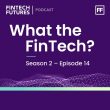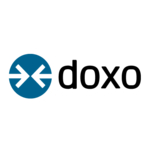Low-code development and BaaS APIs: is this embedded finance’s hockey stick moment?
Enough has been said and written about the effect of the pandemic in hyper-accelerating the shift to digital – for enterprises and consumers alike. This is one widely accepted fact we can note and move on from.

The combination of low-code development and BaaS APIs is enabling more companies than ever to add banking services into existing apps and products
However, another rising wave has been afoot for a few years now – something that Bain Capital Ventures (BCV) thinks is far greater than the Internet, Cloud and Mobile combined (yes, you read that right) – with a projected market value of $3.6 trillion by 2030. BCV heralds this wave as the Fourth Platform: financial services in an embedded (or integrated) form within technology-driven businesses.
Andreesen-Horowitz (a16z) and CB Insights talk about this being the banking industry’s “AWS moment”, with new Banking-as-a-Service (BaaS) players offering all (or parts of) the banking stack as-a-service for a new crop of fintechs and tech-driven brands. a16z further predicts that every company will become a fintech company – embedding finance across digital and traditional brands – by leveraging offerings from BaaS providers.
Embedded finance and BaaS are two sides of the same coin. Brands and fintechs offer embedded financial services to consumers and businesses while BaaS providers are the suppliers and enablers for those brands and fintechs.
Two trends collide to form one massive opportunity
With the pandemic driving a tectonic shift to online, virtual and instant gratification, embedded finance allows brands and disruptive new financial products to gain and delight customers, increase share-of-wallet and create stickiness. From a customer standpoint, the financial experience is in the moment, contextual and seamless within the brand experience – to the extent that the finance is almost invisible.
As examples, think of Apple – which now offers a credit card backed by Goldman Sachs – or Shopify – going above and beyond by offering embedded payments, balance accounts and loans to aspiring e-commerce businesses. With the likes of Amazon, Google, Doordash, Chime and Affirm, the list of embedded finance and BaaS-powered use cases and players is growing rapidly.
This growth is primarily fueled by a whole slew of capable BaaS players – Synapse, Treasury Prime, Stripe, Marqeta, Bond, Finastra, Railsbank, Solarisbank, Unit, Galileo, BBVA Open Platform, GPS and many more – offering differentiated and compelling technical and financial propositions. These BaaS players in turn have partnerships with one or more banks and offer APIs (sometimes a single API) for a brand or fintech customer to call and access the offered financial service via the API.
In a way, things have come full circle – from software powering financial services (core and engagement platforms) at FIs, we now have banking subsumed into software and offered via APIs.
BaaS APIs are becoming the new currency in the world of financial services
With this BaaS revolution going on in the background, the low-code market has grown exponentially, with more than 100 platform providers – with different specialisations – competing for market share. Microsoft, Mendix, OutSystems and ServiceNow are some of the leading players while there are specialist challenger firms more focused on specific personas (professional developers, citizen developers and business process users) and target areas (apps, workflow, automation, analytics and so on).
To say that low-code adoption was propelled further by the pandemic is an understatement. Whether for businesses urgently wanting to digitally transform, or for more advanced corporations, low-code has comfortably hit its stride as a new paradigm in software development.
Now, with over 2,000 fintechs launched in 2019, the rise and maturity of BaaS offerings and differentiated embedded finance use cases/opportunities and a world where APIs rule, developers are now the first customers of the banking and financial services capability stack.
Brands and fintechs, banks and third-party software developers, independent software vendors and system integrators need to find, attract, hire, train, mentor, motivate, manage and drive world-class development teams to deliver business outcomes.
They must do all this in the face of non-trivial challenges:
- Talent wars in a field of wider opportunities as business lines blur and career options abound for software developers.
- Walking the fine line between investing to build a truly high-quality product that customers will love, yet balancing cash burn and ROI.
- Navigate a web of technology choices for every aspect of the tech stack, including most importantly, the BaaS vendor stack itself.
- Be prepared to execute quickly – and pivot on a dime – to get ahead of the market in an extremely competitive, dynamic and fast-paced environment.
A breed of developer-friendly, open, API-driven, modern, enterprise-grade low-code platforms could be the answer. Here is how:
- Serious B2C and B2B2C digital experiences at the speed of change – delivered using visual full-stack development with pre-existing widgets, themes, styles and layouts – while still playing well with existing assets, best practices and architectural choices.
- Significantly cut development (specifically UI) cost by reuse – Lego-like composable experience development by dragging and dropping custom-built, rich multi-API widgets – “prefabs” – that combine powerful functionality, pixel-perfect UI and data.
- Democratised and collaborative development – Citizen developers build out experiences based on user journeys and hand them to pros to make apps “enterprise-compliant”; or in a B2B2C context, expert developers build out the core app which is then extended and customised by less-skilled professional services teams.
- Deliver on tough innovation problems – convert teams to full-stack development, become agnostic to tech stack changes, handle custom UI demands through app lifecycle, move B2B customers to a self-serve model and more.
- Peace of mind guaranteed – apps built are performant and secure, the tech stack is modern and future-proof, deploy anywhere without lock-in, generated code is “real” code that can be exported and extended (as an insurance policy), easily available, low-cost skills for writing custom extensions, no price tag for scaling up apps/app objects/app end users and such like.
In 2020, Microsoft cited research predicting that more than 500 million new apps will be built in the next five years, which is more than the total number of apps built in the last 40 years, even as companies struggle to find software developers. According to KPMG, despite the overall market softness in H1 2020, H2 rebounded and saw almost $72 billion in fintech investment (across PE, VC and M&A deals). Klarna, Revolut and Chime raised mega rounds north of $500 million each. KPMG goes on to predict that embedded finance will emerge as the *new North Star* in fintech.
Low-code development layered on BaaS APIs may be embedded finance’s hockey stick moment
Embedded fintech and low-code development are massive scale markets in their own right. The next 1,000 or 10,000 fintechs, FIs and brands that deliver embedded financial services will need to be laser focused on their customers and business to compete and win. Agility, automation and reuse will underpin composable enterprises and personalised experiences, and modern, powerful low-code platforms already are delivering complex, compelling and contextual experiences for discerning development and business teams globally.
Vikram Srivats is vice president of go-to-market and GM of Americas at WaveMaker, the industry’s most open low-code platform for financial technology application developers.
Vikram is an intrapreneurial tech executive with a 20-year track record of incubating, recrafting and scaling businesses for market salience. His work experience spans mature billion-dollar revenue tech players as well as start-ups.
At WaveMaker, Vikram helped build out the first vertical go-to-market strategy and is currently driving overall execution with a purpose-led, passionate team. In previous stints, Vikram incubated an Internet of Things business from the ground up, helped establish a wireless tech licensing business as #1 globally, and shaped the enterprise go-to-market for India’s first handheld computer.









































